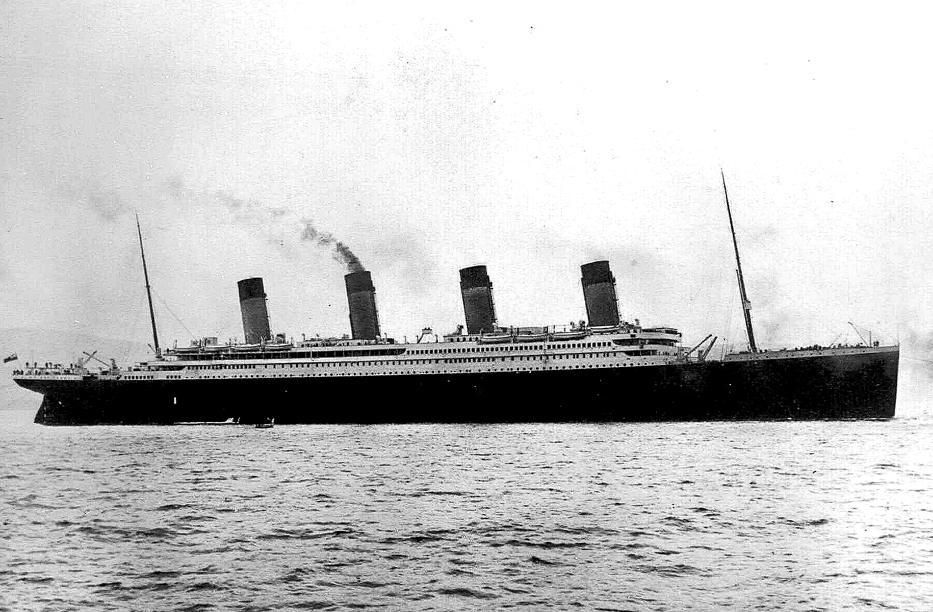If there is a story that endures over time and is revisited from time to time, it is the sinking of the Titanic. There have been many investigations and works dedicated to the ocean liner that sank on the night of April 14-15, 1912 in the icy waters of the North Atlantic, and it seems that there is still material to continue feeding its legend. Titanic Legacy: The Captain, the Daughter, and the Spy is the latest publication revealing information about the final moments of ship captain Edward John Smith, whom the press of the time targeted by asserting that he had shot himself.
The book, by Dan E. Parkes, sheds light on this story through some of the eyewitnesses who boarded the lifeboats. The suicide legend was fabricated by the newspapers. On April 18, 1912, the Los Angeles Express headlined: "Captain E. J. Smith shoots himself," and the next day in the UK, the Daily Mirror echoed the same news on the front page: "Captain Smith shoots himself on the bridge."
Traditionally, a captain taking his own life out of fear and consequently failing to assist passengers and other crew members was considered a disgrace. His widow, Eleanor, who died in 1932 after being hit by a taxi, and his daughter Helen, who died at the age of 75 in 1973, were devastated by the information published after the tragedy and in the following years. Helen married and had twins, Simon and Priscilla, who died without descendants: he died while piloting a plane during World War II in 1944, and she three years later due to polio.
Not content with asserting the suicide, to further aggravate the wounds, some survivors claimed that the captain had a fondness for alcohol, ignored warnings about the presence of icebergs, and steered the ocean liner at a speed exceeding the established limits.
For a rumor to be ambiguous, significant, plausible, and tautological, a scapegoat is needed, which in this case fell on the captain. Dan E. Parkes' investigation highlights two hypotheses about the commodore's fate: drowned or died from freezing along with the other 1,495 people.
Initially, the author is aware that a group of survivors heard gunshots assuming the captain had committed suicide, but at no point was the supposed body identified. Parkes attributes the noise of the shots to an attempt to control passengers who were fleeing in panic, leading them to believe it was the captain who had taken his own life.
To counter these negative assumptions, Parkes relies on statements from some survivors, such as the case of the 27-year-old banker and first-class passenger Robert Williams Daniel, who told the New York Herald: "Captain Smith was on the bridge." He also said that after jumping from the deck, "I saw how the water slowly rose from the feet to the captain's waist and finally engulfed him. He died a hero."
Another first-class individual, Frederick Dent Ray, 33, testified before a commission that Arthur Paintin, E. J. Smith's steward, "was last seen on the bridge, standing next to the captain." Another millionaire named Frederick Hoyt claimed that he had returned to his room to leave his coat because he thought he would have a better chance of surviving due to freedom of movement and crossed paths with E. J. Smith when returning to the deck. Both took a strong drink to ward off the icy cold, and later, Hoyt jumped into a lifeboat.
The 31-year-old cook Isaac Maynard testified that he saw the captain "standing on the bridge" while he himself was being swept overboard. He also claimed that he later saw the captain swimming fully clothed with his cap on his head. One of the men holding onto one of the lifeboats tried to save the captain by reaching out his hand, but the captain shouted, "Take care, boys."
George Brereton, a professional card player aiming to fleece first-class passengers traveling under the pseudonym Charles M. Hays, told the Brooklyn Daily Eagle: "Fifteen meters away was the body of a baby that caught the attention of the struggling sailor. He grabbed the child and with his right arm headed towards a lifeboat. The little one was safely placed on board, and the captain resumed his struggle for the sinking Titanic."
Several months after the tragic event, stories emerged from the most creative minds, some of which the book's author echoes. A man from Baltimore claimed that the captain lived in disguise in Maryland, and years later, Life magazine published that a vagabond from Ohio claimed to be E. J. Smith.
In the mythology created around the most notable maritime accident in navigation history, new stories emerge from time to time, adding to what has been told. Some refute what has been published, while others try to provide more information. James Cameron, director of Titanic (1997), is passionate about everything related to the world's most famous ocean liner. Therefore, in his story starring Leonardo DiCaprio and Kate Winslet, he decided to give his own version of the captain's death. That's why he placed actor Bernard Hill, who portrayed E. J. Smith, at the helm as the ship sank.
In a way, the captain could have foreseen his fate based on what the book recounts because Ada Murdoch, wife of First Officer William Murdoch, expressed her distress about whether the Titanic was fit to sail, relying on a literary prophecy. The Chicago Tribune reports what Smith allegedly replied: "Well, if the largest ocean liner in the world sinks, I will go down with it." Once again, a media outlet contributes another grain of sand to perpetuate the rumor.
